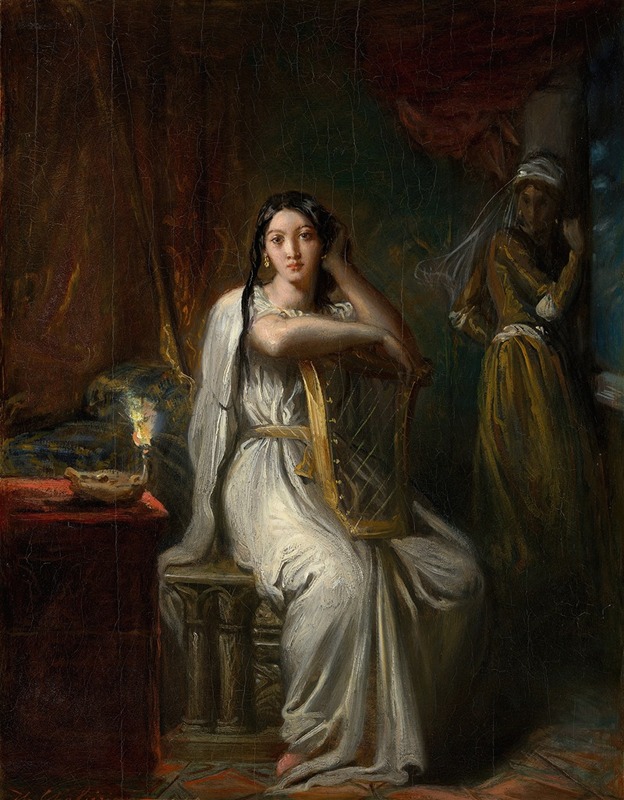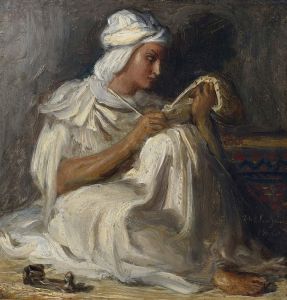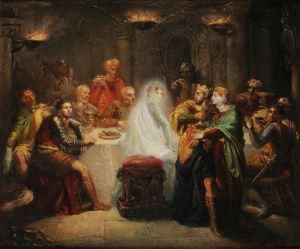
Desdemona
A hand-painted replica of Théodore Chassériau’s masterpiece Desdemona, meticulously crafted by professional artists to capture the true essence of the original. Each piece is created with museum-quality canvas and rare mineral pigments, carefully painted by experienced artists with delicate brushstrokes and rich, layered colors to perfectly recreate the texture of the original artwork. Unlike machine-printed reproductions, this hand-painted version brings the painting to life, infused with the artist’s emotions and skill in every stroke. Whether for personal collection or home decoration, it instantly elevates the artistic atmosphere of any space.
Théodore Chassériau's painting "Desdemona" is a notable work by the French Romantic artist, created in 1849. Chassériau, born in 1819 in Santo Domingo, was a prominent figure in 19th-century French art, known for his unique style that blended elements of Romanticism and Orientalism. He was a student of the renowned painter Jean-Auguste-Dominique Ingres, which significantly influenced his early work, although he later developed his own distinctive approach.
"Desdemona" depicts the tragic character from William Shakespeare's play "Othello." In the play, Desdemona is the wife of Othello, a Moorish general in the Venetian army, and becomes a victim of jealousy and betrayal, ultimately leading to her untimely death. Chassériau's portrayal of Desdemona captures the emotional depth and complexity of her character, emphasizing her innocence and vulnerability.
The painting is characterized by its rich color palette and the delicate rendering of Desdemona's features, showcasing Chassériau's skill in capturing both physical beauty and emotional expression. The use of light and shadow in the painting adds to the dramatic effect, highlighting Desdemona's serene yet sorrowful demeanor. Chassériau's attention to detail is evident in the intricate textures of the fabrics and the subtle play of light on Desdemona's skin.
Chassériau's "Desdemona" reflects the Romantic fascination with exotic and historical themes, as well as the exploration of human emotion and tragedy. The painting is a testament to Chassériau's ability to convey narrative through visual art, capturing the essence of Shakespeare's character while infusing it with his own artistic sensibilities.
Throughout his career, Chassériau was known for his portraits, historical scenes, and Orientalist subjects. His work often explored themes of beauty, sensuality, and the exotic, drawing inspiration from his travels and the cultural milieu of his time. Despite his relatively short life—he died in 1856 at the age of 37—Chassériau left a significant impact on the art world, influencing later artists such as Gustave Moreau and the Symbolists.
"Desdemona" is housed in the Louvre Museum in Paris, where it continues to be admired for its artistic merit and emotional depth. The painting is an excellent example of Chassériau's ability to blend classical techniques with Romantic sensibilities, creating works that resonate with viewers on both an aesthetic and emotional level.
In summary, Théodore Chassériau's "Desdemona" is a masterful representation of one of Shakespeare's most poignant characters. Through his expert use of color, light, and composition, Chassériau captures the tragic beauty of Desdemona, making it a significant work in the canon of 19th-century French painting.


















